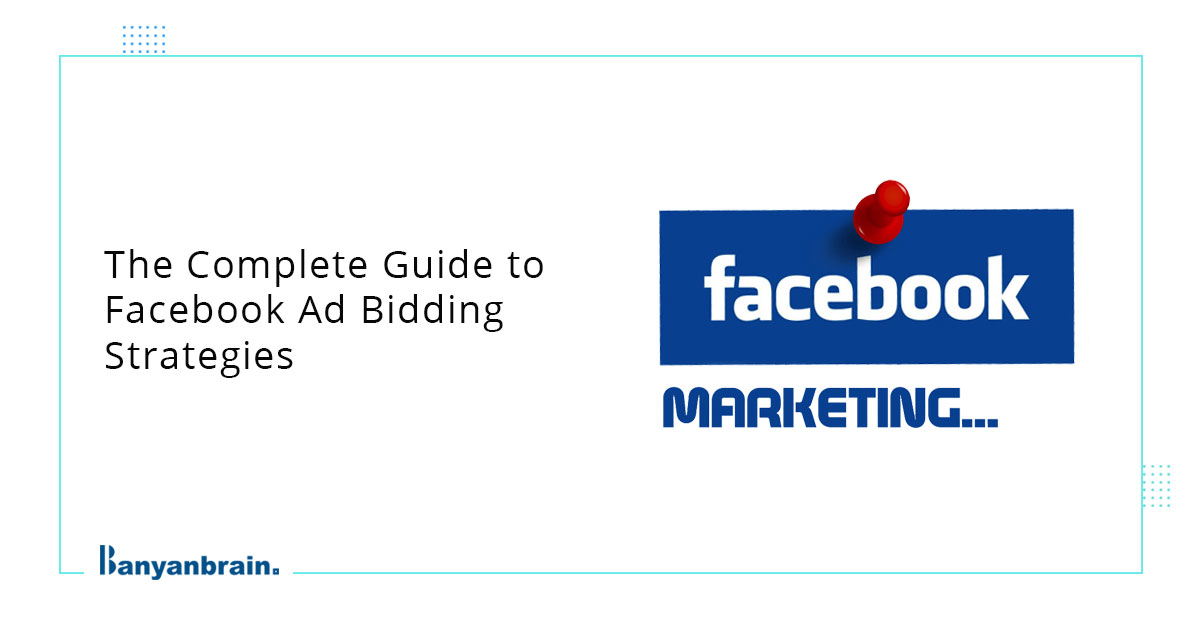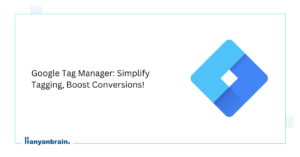Facebook bidding is an auction where advertisers compete for ad placement in specific locations on the platform. In short, it’s about how much an advertiser is willing to pay for their ad to be shown to their target audience. Facebook bid strategies enhances ad efficiency and ensures users see the most relevant social media ads while helping advertisers maximize their investment.
Facebook’s algorithm is designed to benefit both users and advertisers, making it a win-win situation. A bid does not represent the advertiser’s cost; it indicates what the advertiser is willing to pay for specific actions, such as clicks.
Advertisers often overlook this, but the bidding strategy for Facebook ads significantly impacts ad campaigns. A well-crafted bidding strategy can help you reach your desired audience and make your ads more accessible to them.
Robust bidding strategies are essential for helping users discover relevant ads. Advertisers can effectively reach their target audience using accurate filters and search queries as a part of an effective social media marketing strategy.
Understanding Facebook Bid Strategies & Auction Dynamics
When you choose a bidding strategy, you select how Facebook’s algorithm will bid for you in ad auctions. Facebook uses ad auctions for advertisers to compete for ad placements. When there’s an opportunity to show an ad to someone who fits Facebook’s ad targeting, individuals enter the auction. The highest bid usually gets the most ad placements, but it’s about more than just the bid size. That’s what makes Facebook’s advertising auctions different from other formats.
Facebook bid strategies offer advertisers many objectives, including brand awareness, traffic, conversions, app installs, engagement, reach, messages, and catalog sales. An efficient online marketing agency can help you achieve these objectives.
To ensure that both the advertisers and users benefit from winning the auction, the winner is the ad with the highest “total value.” The total value consists of:
- Bid: It is the budget that you are willing to pay for the desired outcome, such as clicks, impressions, or conversions. The size of the bid matters, but it needs to be balanced with budget constraints.
- Approximate action rates are the probability that the desired customer will engage with or convert from a particular ad. The higher the clicks, shares, likes, or conversions, the higher the chances of winning the auction and delivering to the target audience.
- Quality of the ad: Determining user feedback and other attributes, including information in controversial language. The relevance score states how appealing your ad is to the target audience. The ad relevance includes:
- Quality ranking
- Engagement rate ranking
- Conversion rate ranking
The 5 Facebook bidding strategies are explained!
Generally, three forms of bidding strategies can help you achieve your goals: spend-based, goal-based, and manual. Spend-based strategies include lowest cost (automatic bidding) and highest value, goal-based strategies include cost cap and minimum ROAS (Return on Ad-spend), and manual strategies include bid cap. You can consult an SMO agency to get services.
Now let’s explore the 5 points that make up a comprehensive guide to Facebook ad bidding strategy, which will surely optimize your brand’s visibility:
Spend-based strategy: It includes the most straightforward and standard strategy for selecting the best SMM campaign objective. It aims to spend the total budget and get the best results. It includes:
- Automatic bidding: Also known as lowest cost or highest volume, this strategy maximizes the delivery of conversions within the budget provided. It is very similar to click bidding in Google ads. The lowest cost is an approximate option. You must set an overall campaign and add a budget within the budget and schedule section. It is the best bid strategy for Facebook ads.
The strategy is best suitable for:
- Those who want to spend their entire budget
- Who want to maximize their delivery and conversions from a specified budget.
- Who does not have CPA or ROAS goals.
Drawback: This strategy is not CPA-optimized. Facebook will deliver you the best results, but your CPA may change.
- Highest value: This strategy allocates your entire bid budget to the highest-value purchases or conversions. Facebook utilizes machine learning to estimate the return on ad spend (ROAS) a user can generate and then uses this prediction to bid for the highest-value customers.
Drawback: To monitor conversion events closely, you must have a proper tracking setup or conversion values.
Goal-based strategies: Goal-based strategies, as the name suggests, are when you have a goal, like a specific cost or value you want to achieve. It has two subsets:
- Cost cap: Cost per bid, or cost bidding, is used to optimize your Facebook ad bidding strategy. The main goal of this strategy is to keep the average cost per result as you specified. This strategy is most beneficial for those with a clear idea of how much they can earn from each conversion. With this Facebook bid strategy, you can maintain your cost per action (CPA) regardless of market conditions.
Drawback: If you have set a meager cost per action, it may take time for Facebook to spend your entire budget and exit the learning phase.
- Minimum ROAS: This strategy, also known as ROAS (Return on ad spend), is usually used by e-commerce companies whose primary goal is to yield profitable revenue. Over the campaign, the main focus is on average return on expenditure. If you are new to Facebook ad campaigns, you must verify your business or run ads for a few weeks. Therefore, this is one less popular Facebook bid strategy.
Drawback: It can lead to some ROAS fluctuations during the learning phase. It also does not guarantee that it will spend your whole budget if your ROAS rate is very high. It may take time to offer you the best results.
Manual bidding strategy: This bidding strategy for Facebook ads is old-fashioned. It provides direct control to advertisers over the ad spend. It helps achieve particular campaign objectives by setting the maximum amount you will pay for the desired action. It has one subset only:
Bid cap: This strategy is designed to help you secure the best ad bid in various auctions. It also allows Facebook to bid dynamically based on your cost or value objectives. It is most suitable for advertisers who can calculate their bids and precisely understand Facebook ad costs and conversion rates.
Drawback: The bid cap cannot control the cost per action during the reporting period and requires frequent bid adjustments.
All these bid strategies help optimize Facebook ad campaigns, promoting the product or service as best as possible.
Best Bid Strategy for Facebook ads
We have researched the top 5 Facebook bid strategies. Understanding Facebook’s campaign bidding strategies requires careful consideration, and selecting the best one for your company’s digital marketing can be challenging. We will discuss how to choose the best bidding strategy for Facebook ads.
- Automated bidding: If you want to maximize your results with the specified budget. Most advertisers use Facebook to generate leads for social media, meaning content downloads, free trials, log-ins, or consults. It is the best bid strategy for Facebook ads.
- Highest value: If you want to maximize your conversion value, this would be the best bidding strategy. This strategy is more suitable for e-commerce businesses as it focuses on leading users to complete the purchase with a fixed amount. It is also one of the most cost-effective bidding strategies.
- Cost cap: The best Facebook bid strategy is cost cap, which allows you to control the cost of results. It can fulfill both lead generation and e-commerce objectives. A cost-cap bidding strategy will work if you have a proper map with costs and conversion rates.
- Minimum ROAS: If you want to control the return on your ad spend, minimum ROAS as a bidding strategy would work. As it focuses on ROI, e-commerce businesses would benefit from this strategy. It is the most suitable as it allows us to plan according to what will generate the most profit with our budget.
- Bid cap: This would be the best strategy to adopt if you want to cap how meta bids on auction manually. A bid cap will help you get total control over your budget.
These were the types of bidding on Facebook. Now, we will study the techniques to optimize these Facebook bids.
Techniques to Optimize Facebook bids
We have studied the advantages and disadvantages of all 5 Facebook bid strategies. Now, we will learn the best techniques for optimizing Facebook ad campaigns.
- Choose a higher bid: A higher bid encourages better engagement and higher CTR ratios, increasing your chances of being displayed to your target audience.
- Prefer videos over static ad posts: Videos are undoubtedly more engaging to customers than static posts. Videos also engage more shares. So, we can combine both videos and text images to get the best result.
- Use custom audience: Customize your audience according to their demographics and interests based on the data collected. Use your ads accordingly. You can create a list from the data and then send it to Facebook, which will help generate leads and sell products.
- Use the inspect tool efficiently: If you are not able to track the performance of your ad, the inspect tool can help you monitor the progress of set delivery, including factors like audience saturation, bidding competition, and audience overlap.
- Repeat existing ad campaigns: If you want to optimize your ROI, repeat an ad rather than create a new one. Facebook recommends not using the same audience for different ad campaigns, but repeating a campaign will allow your ad to reach more people.
This blog explains Facebook bid strategies as an auction where advertisers compete for the best Facebook placement. Facebook bid strategy types are spend-based, goal-based, and manual bidding strategies, which have subsets. Spend-based bidding includes automated bidding and the highest value, which aims to spend the entire budget and get the best results. Goal-based includes minimum ROAS and cost cap to maintain the purchase value within the budget. Manual bidding consists of a bid cap that gives you overall budget control.
For e-commerce businesses, cost cap, minimum ROAS, and highest value bid strategy on Facebook would be more suitable as their main aim is to maximize profit. The highest volume or cost cap would be the best for lead generation, as bringing customers to your account is the main objective.
At last, we learned some ways to optimize your Facebook ads manager bid strategy, like choosing the higher bid, using videos over static posts, using the inspect tool, repeating the ad, and customizing the audience.
FAQs:
What is the bid cap strategy for Facebook ads?
A bid cap strategy for Facebook ads involves setting a maximum bid for each desired outcome such as click, impression, or conversion.
What is the highest volume bid strategy on Facebook?
The highest volume bid approach maximizes the number of targeted activities such as clicks or conversions within the specified budget.
What is the lowest cost bid strategy on Facebook ads?
The lowest-cost bid strategy for Facebook seeks to generate the greatest number of actions at the lowest possible cost per action(CPA).
How to change the bid strategy on Facebook?
To update your bid strategy on Facebook, navigate to” Ads Manager”, select your campaign, and click “edit”. Navigate to “edit ad set” in the bid strategy section. Click “Change bid strategy”, and select your new strategy. Review the impact on performance. Adjust settings as necessary. Confirm the adjustments to apply the new bid strategy.
How do you create a strategy on Facebook?
Creating a Facebook strategy involves defining specific objectives, identifying target audiences, allocating a budget, producing attractive ad creatives, and selecting campaign objectives. Then select a bid strategy.






